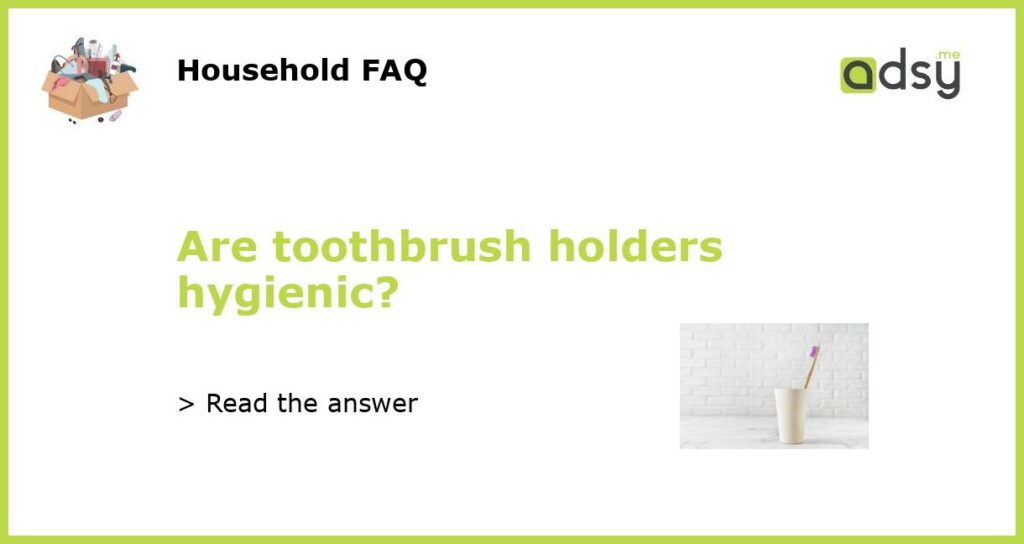Why Should You Consider the Hygiene of Your Toothbrush Holder?
Keeping good oral hygiene is of utmost importance to prevent various dental problems. While most people focus on brushing their teeth regularly, they often overlook the cleanliness of their toothbrush holder. But have you ever wondered if toothbrush holders are hygienic? In this article, we will explore the potential risks associated with unclean toothbrush holders and why you should consider their hygiene.
Bacteria and Germs: A Hidden Threat in Your Toothbrush Holder
It’s no secret that toothbrushes can harbor bacteria and germs if not properly maintained. But did you know that toothbrush holders can also become a breeding ground for these microbial nasties? When you place a wet toothbrush in a holder, it creates a damp environment perfect for the growth of bacteria, mold, and fungi.
This is particularly concerning because these microorganisms can cause various infections, including oral thrush, strep throat, and even the common cold. When you use a contaminated toothbrush from an unclean holder, you expose yourself to these harmful pathogens, putting your oral and overall health at risk.
The Importance of Regular Cleaning and Maintenance
To prevent the colonization of bacteria and germs in your toothbrush holders, it is crucial to establish a regular cleaning routine. Ideally, you should clean your toothbrush holder at least once a week, if not more frequently. This can be done by washing the holder with warm soapy water or using a disinfectant solution.
By keeping your toothbrush holder clean, you minimize the chances of harmful microorganisms thriving in the vicinity of your toothbrush. Moreover, regular maintenance also helps eliminate unpleasant odors that can develop from bacterial growth.
Choosing a Hygienic Toothbrush Holder
When selecting a toothbrush holder, it is essential to opt for one that promotes hygiene. Look for holders with sufficient ventilation to allow for natural drying of the brush. This will help prevent the growth of bacteria and mold. Additionally, consider materials that are easy to clean and disinfect, such as ceramic or glass.
Furthermore, avoid holders with complex designs and hard-to-reach crevices, as they can become a breeding ground for bacteria. Instead, opt for simple, streamlined holders that are easy to clean thoroughly after each use.
Other Tips for Maintaining Good Oral Hygiene
While focusing on toothbrush holder hygiene is essential, there are other crucial aspects of oral hygiene that should not be overlooked. Here are a few additional tips:
- Replace your toothbrush every three months or sooner if the bristles become frayed.
- Store your toothbrush upright and allow it to air dry between uses to prevent the growth of bacteria.
- Avoid sharing toothbrushes, as it can lead to the exchange of saliva, bacteria, and pathogens.
- Regularly sanitize your toothbrush by soaking it in an antiseptic mouthwash or diluted hydrogen peroxide solution.
- Visit your dentist regularly for professional cleanings and check-ups to maintain optimal oral health.
By incorporating these practices into your oral hygiene routine, you can significantly reduce the risk of bacterial and germ contamination in your toothbrush holder and maintain a healthy mouth.






